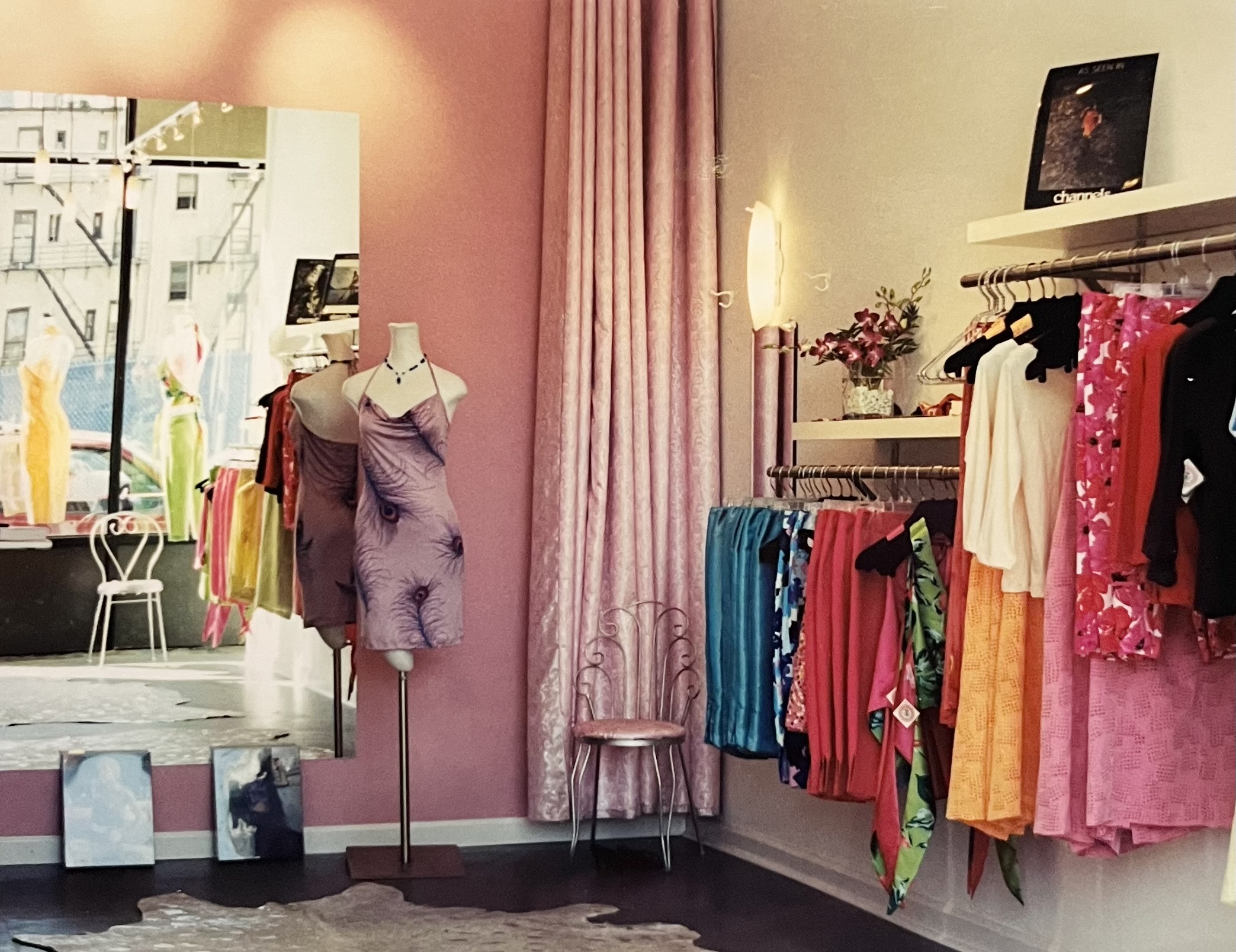From an early age I felt a strong vocational call to become a fashion designer. As a person of faith, I had to contend with the presumed tension between serving God and working in an industry that the Church often deemed materialistic, superficial, and godless. As I sought to reconcile my God-given creative gifts with my desire to use these gifts for God’s glory, Christians in the arts came alongside to help me reconcile this false dichotomy and mentored me in my goal to pursue this career.
“If clothes dress the body, does the body dress the soul?”
After working as a designer for 15 years in New York City, I launched my namesake label—Fiona Walker Inc.—in 1998, founded on ethical, biblical principles. Upon closing my business in 2005, I was invited by Tim Gunn, then Chair of the fashion department, to teach at my alma mater—Parsons School of Design. Two years later I became full-time faculty and went on to hold various leadership positions in the School of Fashion. In 2017, I decided to pursue an MA in Fashion Studies at Parsons and as I considered my thesis topic I was drawn back to a question I had asked of cultural theorist Malcolm Barnard at a Fashion Studies conference in 2014, which remained unanswered: “If clothes dress the body, does the body dress the soul?” As I moved through my initial research in an attempt to answer this seemingly impossible question, I realized it was theologically inaccurate as it supports a dualist, platonic view of the relationship between the body and soul, whereas the biblical narrative in Genesis 2:7 presents us with an integrated view of human condition, more aptly described as an embodied soul. Since the current discourse in Fashion Studies speaks to the dressed body between life and death in the present, my research introduced the concept of the future body from the perspective of religious faith practitioners in the reformed Christian tradition. My thesis, “Enclothed Transcendence (Towards a deeper understanding of future embodiment)” sought to articulate what it means to be clothed in the future (heaven on earth).
When writing about the relationship between the body and clothing, cultural theorists in Fashion Studies acknowledge the disconnect between "insides" and "outsides"; the body and soul; the material and the immaterial; yet struggle to reconcile what or who we are really dressing in these contexts. Christianity is uniquely poised to offer a reconciled proposition to these dichotomies, given the biblical view of embodiment. In order to begin addressing the disconnect and proposing a reconciled view, it was necessary to address some misconceptions about what Christians believe about the body, materiality, and perception of heaven. In dialogue with those outside the faith, the perception is that Christians are anti-body and invested in "exiting this planet" to heaven after they die. However, nothing can be further from the truth when we look at the biblical text.
My thesis proposes an integrated model of identity (embodied soul-dress-fashion) centered around the inter-connectivity of these three elements to articulate who we are in the world(s) we inhabit. These are articulated within a universal framework of bodies, states, and environments that is inclusive of the past, present, and future. Second Corinthians 5:1-10, “Awaiting the New Body,” where Paul speaks about the coming state of nakedness as not being “unclothed, but rather further clothed” was a central text:
“. . . For in this tent we groan, longing to put on our heavenly dwelling, if indeed by putting it on we may not be found naked. For while we are still in this tent, we groan, being burdened—not that we would be unclothed, but that we would be further clothed, so that what is mortal may be swallowed up by life. . . .”
Here, Paul utilizes the language of dress to explain this future state and in "Surprised by Hope” New Testament theologian N.T. Wright beautifully describes this future, physical state as “more fully clothed”. I found this phrase utterly compelling as it conjures up the sense of us being more physical, not less in the future “heaven on earth"; of our bodies being more real than they are now, living in a more physical world than the one we inhabit currently. Wright challenges the traditional notion of "spirit" as immaterial and the physical as more material by reminding us that the first-century Christians viewed these terms in the reverse. His framing deeply resonated with my own intent to articulate the relationship between this body we are now in, the role fashion plays in dressing it, and the body believers are promised in the future (that will no longer need to be dressed with clothing). As I worked through this in the context of dress, embodiment, and spirituality, it led me to frame a speculative proposition that the future body of the believer can be conceptualized as the ultimate form of dress. If we are to “put on” this new body as we do a coat or a dress today, then it would follow that this future body itself is the ultimate, fully redeemed, perfected form of dress. Therefore, the role fashion plays now is as facilitator, standing in, as it were, to cover us until there is no need for this “temporal dressing of us” anymore.
This topic informed my approach to research at the intersection of dress, embodiment, and spirituality and led to collaborative inter-faith projects with colleagues from various religious backgrounds. In March 2023, we co-created a day-long event entitled: Fashion-Faith: Rituals and Dialogues,1 offering a series of panel discussions on faith, fashion, and philosophy interspersed with spiritual meditations, poetry readings, and musical performances that pointed attendees toward the practices of mindfulness and worship. The response was overwhelmingly positive and participants expressed their appreciation to us for providing a space for civil discourse across differences at a particularly charged time of social unrest in the US. We were among the first recipients of the inaugural “Culture of Care” award in 2025 that will support an upcoming exhibition in the Arnold and Sheila Aronson Galleries on campus in February 2026. The exhibit imagines the gallery as a third space, offering a participatory, embodied, immersive experience centered on the key question: What do people go to faith for? Approaching 'faith' in its most generous definition, the exhibition will explore themes of refuge, ritual, belonging and visitors are encouraged to engage with other objects on display in this context. Public programming will include panel discussions, conversations, artist talks and workshops - all open to the New School community and the general public.
This exhibition celebration of inter-faith practices and their relationship to fashion is the first of its kind at The New School in New York. Bringing together the seemingly disparate domains of faith and fashion to facilitate cross-cultural conversation about identity and belonging represents a full circle moment and the movement of God in our midst.

